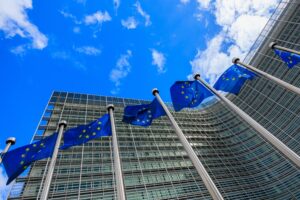Looking upstream to achieve SDG 14
This year’s High-Level Political Forum focuses on five Sustainable Development Goals, one of which is SDG 14 – Life Below Water. Saving the ocean starts on land, freshwater ecosystems are crucial to preserving ocean health.

Tracing impacts on the ocean across landscapes and back to their source is central to tackling global development aspirations at a system scale. Managing from source to sea balances upstream and downstream interests and provides an avenue for coordination across all SDGs.
Societies continue to generate pollutant flows with a cascade of impacts on terrestrial and water- related ecosystems extending to coastal zones and the ocean. Enormous amounts of human and agricultural waste, wastewater and runoff wash into rivers and wetlands and from there into the ocean.
“Land, freshwater, coasts, and the ocean are linked, so what happens in one place will inevitably have consequences elsewhere.”
Oceans become more acidic due to increased absorption of carbon dioxide, threatening the growth of calcifying organisms and entire food chains. History also demonstrates our limited capacity to safeguard the flows of water, sediment and biota needed to sustain ecosystem function along rivers and at the coast, with devastating impacts on freshwater and marine biodiversity as a result. With a growing global population, increasing consumption and accelerating urbanization, these pressures build towards a breaking point, where no-one will remain untouched.
Whether directly depending on the ocean, or living inland, we all need healthy oceans. All sectors of society must understand and take responsibility for their impact on the ocean, whether it is through runoff from agriculture, untreated wastewater from industrial and domestic uses, inadequate solid waste management, extensive water diversion, sediment trapping in reservoirs, wetland drainage or habitat fragmentation as a result of encroachment.
To answer the above challenges, SIWI leads the development of the Source-to-Sea (S2S) approach and its application in locations around the world and to specific global challenges such as the devasting impacts of plastic pollution. It brings together a global community of practice by hosting the Action Platform for Source-to-Sea Management. Given that the impacts on the ocean often arise from land- based activities or through modifications of freshwater ecosystems and water flows, engaging a community of actors from across the source-to-sea system is essential.
Doing so not only benefits coastal and marine systems but also stimulates actions that can benefit ecosystems on land, i.e., SDG 15. The Source-to-Sea approach is important for achieving sustainability across source-to-sea systems, managing trade-offs and directing investments toward activities that create benefits for the system as a whole. By recognizing the intrinsic link between development activities and their impacts – some of which may occur far downstream – upstream actors can contribute positively to the health of the ocean and revitalize their connection to it contributions to their and the world’s well-being.
The Source-to-Sea approach aims to strengthen coordinated governance of natural resources, acknowledging the continuity of water-related flows and interdependency between different natural systems.
The approach is gaining recognition and is increasingly used in different parts of the world. Recently, Hoi An city in Vietnam has taken up the approach in their development of an environment strategy after participating in a three-day capacity development workshop led by SIWI and IUCN Viet Nam. Participants noted the value of combining the circular economy framework with the holistic S2S approach. Both approaches support each other and can be used to tackle challenges such as marine litter pollution.
The introduction of the S2S approach was attended by a wide range of stakeholders, i.e., city officials, university representatives, private companies, and civil society. The project in Hoi An demonstrates that the S2S approach can be adapted to the local context and serves not only as a large-scale tool but also for stakeholders working on a smaller scale with local challenges such as marine litter pollution. Thus, this approach is largely relevant for advancing the targets for SDG 14 and 15 when building back from the Covid-19 pandemic. Through its character, it also promotes holistic approaches to the development agenda.
Water is central to achieving all SDGs.
Water is an essential resource necessary for both human and environmental livelihoods. Water can help create a truly transformative pathway to sustainable development. It plays a critical role in poverty reduction, maintaining healthy ecosystems, in the mitigation of and adaptation to climate change, and is indispensable for economic development. To accelerate the kind of urgent, efficient, and effective action needed to achieve the sustainable development agenda, it is crucial to address interconnectedness. We must recognise the central role of water as a catalyst for action and progress across all SDGs.







